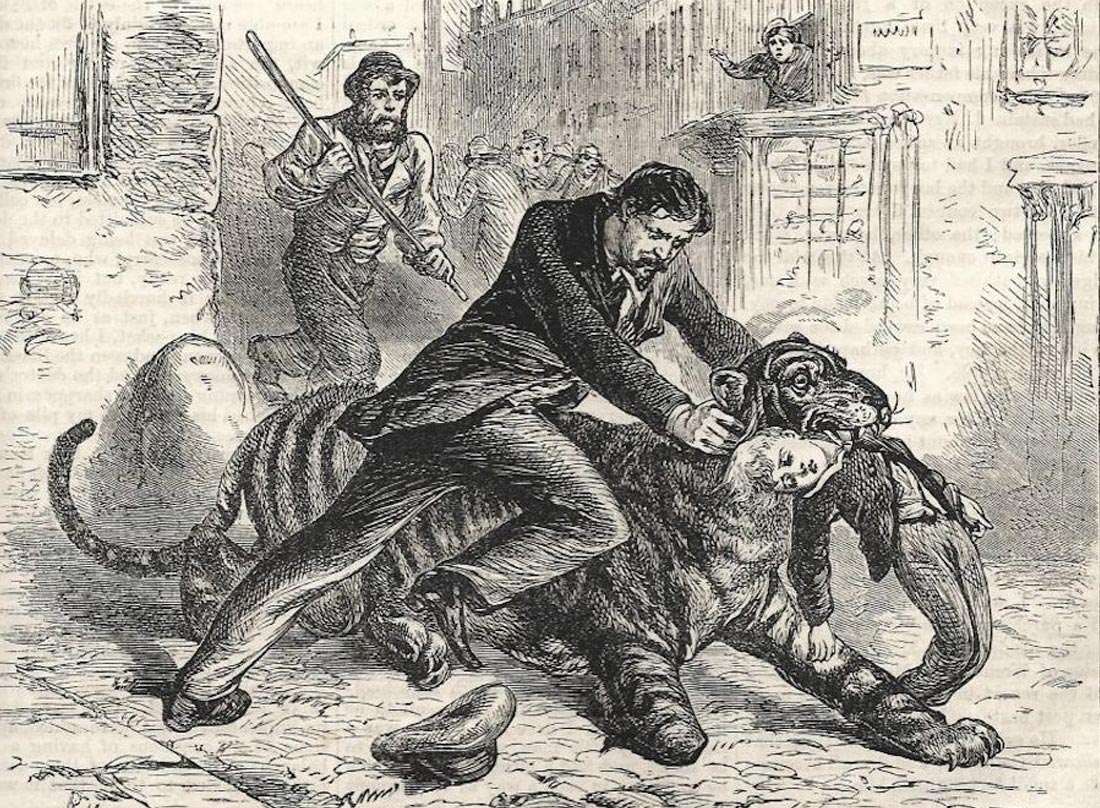As statues go, this installation at Tobacco Dock in London’s East End is a pretty unusual one and the story behind it is definitely of the less cuddly variety.
Charles Jamrach was one such man and his ‘Animal Emporium’ showcased animals that a Londoner would never otherwise get within 5,000 miles of – literally.

Not unreasonably the tiger was not too interested in playing Jamrach’s game and escaped to check out this new and utterly alien and ill-suited environment.
In a flash the young lad was in the tiger’s jaws. At this point it is said that Charles Jamrach and a colleague caught up with the tiger and, with the aid of a crowbar and much manic shouting, managed to save the boy. Accounts say he thrust his bare hands straight down the tiger’s throat, forcing it to let of its prey.
In a tremendous act of gratitude for saving their boys life, his family sued Jamrach for £300 – a considerable sum in the 1850’s.
The statue sits on the site very close to where the incident happened.
